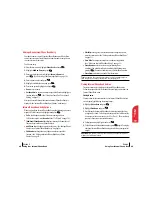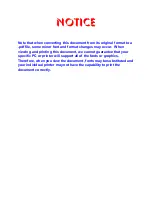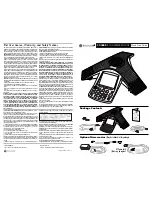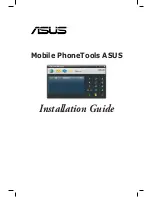
Maintaining Your Phone’s Peak Performance
There are several simple guidelines to operating your phone properly and
maintaining safe, satisfactory service.
䊳
Hold the phone with the antenna raised, fully-extended and over
your shoulder.
䊳
Try not to hold, bend or twist the phone’s antenna.
䊳
Don’t use the phone if the antenna is damaged.
䊳
Speak directly into the mouthpiece.
䊳
Avoid exposing your phone and accessories to rain or liquid spills. If
your phone does get wet, immediately turn the power off and remove
the battery. If it’s inoperable, return it to your wireless service provider.
Maintaining Safe Use of and Access to Your Phone
FAILURE TO FOLLOW THE INSTRUCTIONS OUTLINED MAY LEAD TO
SERIOUS PERSONAL INJURY AND POSSIBLE PROPERTY DAMAGE
Using Your Phone While Driving
Talking on your phone while driving (or operating the phone without a
hands-free device) is prohibited in some jurisdictions. Laws vary as to
specific restrictions. Remember that safety always comes first.
When using your phone in the car:
䊳
Get to know your phone and its features, such as speed dial
and redial.
䊳
When available, use a hands-free device.
䊳
Position your phone within easy reach.
䊳
Let the person you are speaking to know you are driving; if
necessary, suspend the call in heavy traffic or hazardous
weather conditions.
䊳
Do not take notes or look up phone numbers while driving.
䊳
Dial sensibly and assess the traffic; if possible, place calls when
stationary or before pulling into traffic.
䊳
Do not engage in stressful or emotional conversations that may
divert your attention from the road.
Section 13
Knowing Performance and Safety Guidelines
75
13
Performance
and Safety
Getting the Most Out of Your Reception
Keeping Tabs on Signal Strength
The quality of each call you make or receive depends on the signal
strength in your area. Your phone informs you of the current signal
strength by displaying a number of bars next to the signal strength icon.
The more bars displayed, the stronger the signal. If you’re inside a
building, being near a window may give you better reception.
Understanding the Power Save Feature
If your phone is unable to find a signal after 15 minutes of searching, a
Power Save feature is automatically activated. If your phone is active, it
periodically rechecks service availability or you can check it yourself by
pressing any key. Anytime the Power Save feature is activated, a message
displays on the screen. When a signal is found, your phone returns to
Standby mode.
Understanding How Your Phone Operates
Your phone is basically a radio transmitter and receiver. When it’s turned
on, it receives and transmits radiofrequency (RF) signals. When you use
your phone, the system handling your call controls the power level. This
power can range from 0.006 watts to 0.2 watts in digital mode.
Knowing Radiofrequency Safety
The design of your phone complies with updated NCRP standards
described below.
In 1991-92, the Institute of Electrical and Electronics Engineers (IEEE)
and the American National Standards Institute (ANSI) joined in updating
ANSI’s 1982 standard for safety levels with respect to human exposure to
RF signals. More than 120 scientists, engineers and physicians from
universities, government health agencies and industries developed this
updated standard after reviewing the available body of research. In 1993,
the Federal Communications Commission (FCC) adopted this updated
standard in a regulation. In August 1996, the FCC adopted hybrid
standard consisting of the existing ANSI/IEEE standard and the
guidelines published by the National Council of Radiation Protection and
Measurements (NCRP).
Section 13
74
Knowing Performance and Safety Guidelines
Содержание 1010
Страница 1: ...LG 1010 Online User s Guide ...






































